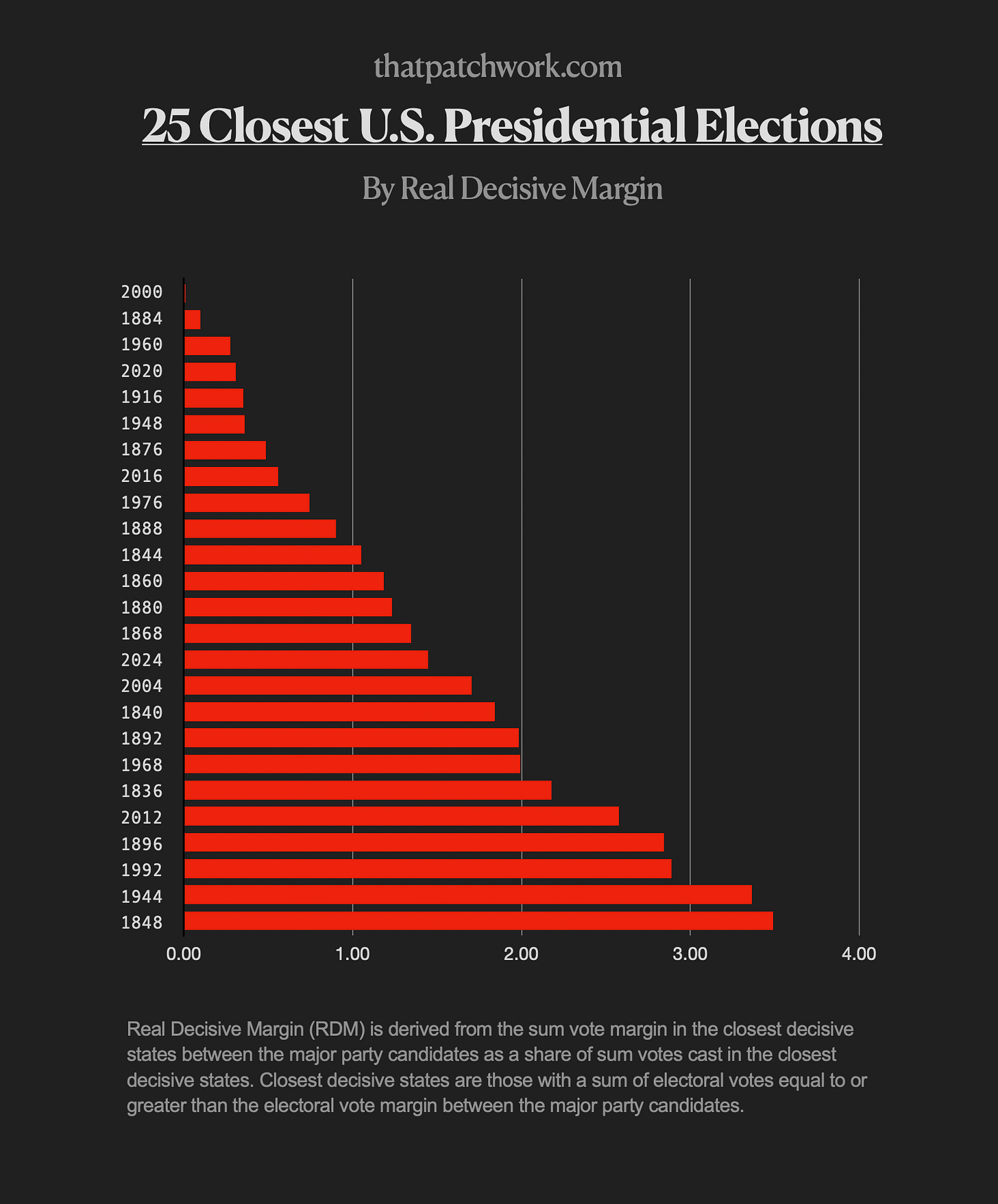2024 Was The 15th Closest U.S. Presidential Election
Trump's victory was wider than his 2016 win over Clinton and his 2020 defeat to Biden.
With election results certified by the states, the 2024 election is now one for the history books. President-elect Donald Trump defeated Vice President Kamala Harris in the fifteenth closest U.S. presidential election in history, based on That Patchwork’s analysis. Trump won by a wider margin than his victory over Hillary Clinton in 2016 and bested Joe Biden’s margin of victory over him in 2020.
The data is based on That Patchwork’s Real Decisive Margin which evaluates presidential elections based on the sum vote margin in the closest decisive states. The closest decisive states are those with a sum of electoral votes equal to or greater than the electoral vote margin between the two major party candidates. The vote margin is then divided by the sum votes cast in the closest decisive states. Six elections were excluded from the rank — 1788, 1792, 1796, 1800, 1820 and 1824 — all of which either involved candidates running effectively unopposed or when the election was decided by the U.S. House of Representatives. This methodology reflects how the national popular vote commonly used in characterizing the margin in presidential elections has no bearing on the outcome. States, their voters and the Electoral College determined the outcome.
In 2024, the closest decisive states were Michigan, Pennsylvania and Wisconsin — states that comprise the electoral votes required for Trump to have earned a bare minimum of electoral votes to win. By a margin of 229,766 votes across three states are 43 electoral votes, Trump won the 2024 election by a Real Decisive Margin of 1.45% — a margin nearly three times that of his defeat over Clinton in 2016. Biden defeated Trump four years ago by an even narrower 42,918 votes or at 0.31% Real Decisive Margin.
The 2024 ranks just one rank ahead of the 2004 election wherein Republican George W. Bush defeated John Kerry by 134,648 votes or a real decisive margin of 1.71%. Barack Obama’s 2008 and 2012 victories rank 26th and 21st, respectively. Obama won each election by an RDM of at least 2.5 percent.
As I wrote in a previous post about the 2020 election, it’s not unprecedented that a period has seen some of the closest presidential elections. A period within the Gilded Age between 1876-1892 also saw among the closest presidential contests amid an era of increased salience around high immigration, economic disruption, social justice, and fractured media.
Despite what is said to be a period of intense polarization, however, the result doesn’t come close to the most closely determined: 2000 — determined by 0.01% or 537 votes in one state.







The popular vote margin was 1.6%, one of the closest ever